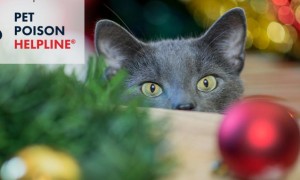Why Do Cats Wiggle Before They Pounce?
Cats are fascinating creatures, known for their playful demeanor, agile movements, and captivating behaviors. One particularly interesting behavior is their wiggling before they pounce on prey or even during playtime. Many cat owners have observed their feline friends engaging in this peculiar wriggling dance, leaving them curious about the motivation behind it. So, why do cats wiggle before they pounce? Let’s explore the reasons behind this captivating behavior.
The Hunting Instinct
First and foremost, it is essential to understand that domestic cats are, in many ways, instinctual hunters. Their ancestral lineage traces back to the wild, where they relied on their hunting skills for survival. The wiggling behavior observed before a pounce is deeply rooted in this instinctive hunting strategy. When a cat spots a potential target, such as a toy, a bug, or even a human’s foot peeking out from under a blanket, its body instinctively prepares for the hunt.
The wiggle serves several purposes. It allows the cat to gauge the distance to its target and position its body for maximum effectiveness. This preparatory movement helps the cat adjust its balance and weight distribution, making the eventual leap more powerful and accurate. The wiggling motion can also create a sense of anticipation and excitement, both for the cat and the observer. It builds up energy and focus, similar to an athlete stretching before a race.
The Role of Play
In addition to being a natural instinct, the wiggling behavior often occurs during playtime when cats are engaged with their owners or other pets. Play is a vital part of a cat’s life and development. It offers both physical exercise and mental stimulation, honing their hunting skills. During play, the wiggle can serve as both a playful tease and a sophisticated form of practice for their hunting techniques.
When a cat wiggles, it may also be communicating to its playmate—whether human or another cat—that it’s about to engage in a chase. This behavior can stimulate interest and excitement in the playmate, making the experience more enjoyable for both parties. Furthermore, this wriggling dance creates anticipation, much like a suspenseful moment in a thrilling movie, building energy before the action unfolds.
Understanding Body Language
Cats are known for their expressive body language, and the wiggling behavior is no exception. The movement can indicate a variety of emotions, ranging from excitement to anxiety. For instance, a cat that wiggles with its tail held high and ears perked up is likely feeling confident and playful. On the other hand, if a cat approaches its prey with a more crouched posture, alongside the wiggle, it may signify a mix of excitement and nervousness.
Understanding feline body language can help cat owners interpret their pet’s mood and intentions better. A wiggling cat might be in a playful state, but it may also be ready to engage in a bout of energy release. Taking note of other body language cues, such as the position of their tail, ears, and whiskers, can offer valuable insights into their current emotional state.
The Importance of Environment
The environment also plays a significant role in a cat’s behavior. Cats are highly attuned to their surroundings and often react to the stimuli present in their environment. If a cat is wiggling before pouncing, it may be responding to movements in its vicinity, such as changes in light, sounds, or even the presence of another animal. This heightened awareness can enhance their ability to hunt, which is why many cats exhibit this behavior when spotting a moving target.
Moreover, the presence of certain textures or surfaces can influence how a cat behaves before a pounce. For example, the softness of a carpet or the thrill of a scratching post may inspire more enthusiastic wiggling, as the cat feels secure and confident in its ability to execute its move.
Conclusion
The wiggling behavior displayed by cats before they pounce is a fascinating blend of instinct, playfulness, and communication. Rooted in their evolutionary background, this behavior facilitates effective hunting while simultaneously enriching their interactions during playtime. It serves as an expression of excitement, allowing for a buildup of energy before the decisive leap.
Understanding why cats wiggle before they pounce not only deepens our appreciation for their complex behaviors but also strengthens our bond with these enigmatic creatures. As cat owners or enthusiasts, we can embrace these moments, allowing our feline friends to express their natural instincts while enjoying the thrill of play. So next time you see your cat wiggling in anticipation, remember that it is far more than just an adorable display; it is the continuation of a story that has evolved over millennia—a story of instincts, play, and the timeless relationship between humans and their feline companions.






